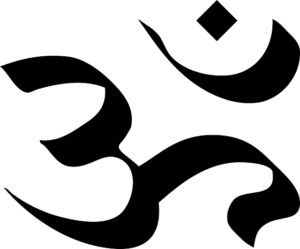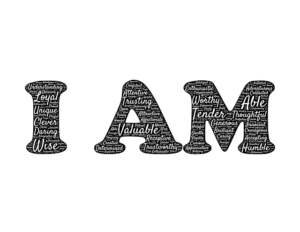A “mantra” is a word, phrase, syllable, or sound used to help us enter a deep state of meditation.
Now, Transcendental Meditation (TM) is probably the most well-known of the mantra meditation techniques. But, they claim that there are only a handful of mantras that should be used for meditation. However, meditation was being practiced thousands of years before TM was promoted by Mahareshi Mahesh Yogi; and so, there are hundreds of thousands of mantras out there. In fact, any word can really become a mantra.
Nevertheless, I do agree with TM on the idea that it is BEST to use a word that to us has no real meaning to us. The reason for this is that the meaning of any word will keep the mind held up on the conceptual or intellectual level of that word. We will not transcend thinking. So, you may want to consider that if you choose to work with a Mantra technique & pick your own mantra.
Below you will find a list of some very ancient, some more modern, popular words & phrases often used in mantra meditation. They are grouped by faith; but for those without a spiritual disposition, some more secular mantras are listed at the end of the article.
(Instructions for how to use the mantras can be found in my previous article: What Is A Mantra)
HINDU MANTRAS:
“OM/AUM” – Sanskrit word that is considered the greatest mantra. It represents the sound of silence

Om/Aum — Hindu Mantra
or the primordial sound of the universe. (used in Hinduism, Buddhism, Jainism)
“S0 Hum” – This is said to be a universal mantra that is meant to be used in conjunction with the breath. Inhale with “So”, and exhale with “Hum”.
The following are Bija (seed) Mantras. In traditional, Hatha Yoga, Bija mantras are believed to be one-syllable sounds that, when said aloud, activate, balance, & purify the energy of the chakras. Starting from the base of the spine (Root Chakra) going up to the Top of the head (Crown Chakra) the Bija (seed) Mantras are as follows:
“LAM” – Activates, balances, & purifies the Root (Muladhara) Chakra. Pronounced LANG
“VAM” – Activates, balances, & purifies the Sacral (Svadhisthana) Chakra. Pronounced VANG
“RAM” – Activates, balances, & purifies the Navel (Manipura) Chakra. Pronounced RANG
“YAM” – Activates, balances, & purifies the Heart (Anahata) Chakra. Pronounced YANG
“HAM” – Activates, balances, & purifies the Throat (Vishuddha) Chakra. Pronounced HANG
“KSHAM” and/or “OM” – Activates, balances, & purifies the 3rd Eye/Forehead (Ajna) Chakra. Pronounced KSHAM = KSHANG; OM = OM/AUM
“OM” & “Silence” – Activates, balances, & purifies the Crown (Sahasrara) Chakra. Pronounced OM/AUM
Other Hindu/Sanskrit mantras:
“Hreem”
“Shreem”
“Shanti”
“Om Namah Shivaya” – Shiva in this context is the supreme reality, the inner Self. It is the name given to the consciousness that dwells in all of us .
The Gayatri Mantra – One of the best known of all mantras. It is said to have the power to purify, illuminate, and heal.
“Om bhur bhuvah svah
tat-savitur varenyam
bhargo devasya dhimahi
dhiyo yo nah pracodayat”
BUDDHIST MANTRAS:
“Om Mani Padme Hum” – Perhaps the most well-known of the Buddhist mantras.
The Dalai Lama says:
“It is very good to recite the mantra Om mani padme hum, but while you are doing it, you should be thinking on its meaning, for the meaning of the six syllables is great and vast… The first, Om […] symbolizes the practitioner’s
Om Mani Padme Hum
impure body, speech, and mind; it also symbolizes the pure exalted body, speech, and mind of a Buddha[…]”
“The path is indicated by the next four syllables. Mani, meaning jewel, symbolizes the factors of method: (the) altruistic intention to become enlightened, compassion, and love.[…]”
“The two syllables, padme, meaning lotus, symbolize wisdom[…]”
“Purity must be achieved by an indivisible unity of method and wisdom, symbolized by the final syllable hum, which indicates indivisibility[…]”
“Thus the six syllables, om mani padme hum, mean that in dependence on the practice of a path which is an indivisible union of method and wisdom, you can transform your impure body, speech, and mind into the pure exalted body, speech, and mind of a Buddha[…]”
– Tenzin Gyatso, 14th Dalai Lama, “Om Mani Padme Hum”
“Om Tare Tuttare Ture Soha” – An Invocation to Tara, the Bodhisattva of Compassion.
Shakyamuni Mantra – This is a mantra to Shakyamuni Buddha (this is the historical Buddha, who’s real name was Siddhartha Gautama)
“Oṃ muni muni mahāmuni śākyamuni svāhā Om muni muni mahamuni shakyamuni svaha”
JUDEO-CHRISTIAN MANTRAS:
Often a verse from scripture, or one of the names of God, is taken for contemplation or meditation within these faiths.
“Be Still; and know that I am God.” (Psalm 46:10)
Adoni
Elohim
Peace Be With You
God is Love
Jesus
Christ
Come, Lord Jesus
Hail, Mary
Thy Will Be Done
MUSLIM MANTRAS:
In Islam, there are 99 names for Allah [God]. Reciting various names, as mantras, is believed to be the best way to attain spiritual growth, satisfaction, purification and rejuvenation.
Allah
Bismillah Al-Rahman, Al-Rahim [In the name of Allah, the most compassionate, the most merciful]. This is considered a powerful chant, which acknowledges, and thanks the Lord for His constant pouring of Divine Love
Ya Salaam – The purpose of reciting this is mainly to gain peace of mind. Therefore, it is recommended for those who are under a lot of stress.
NON-SPIRITUAL MANTRAS:
Love
Peace
Happiness
I am calm
I am whole
I am healthy
I am peace
Patience
Serenity
Contentment
Relax
I hope this was helpful. And remember all it takes to be a good meditator is – practice, practice, practice!
May your days always be filled with love, happiness, & peace,
~ Anthony Profeta

